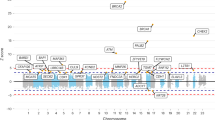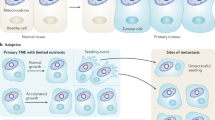Abstract
The B-MYB proto-oncogene is a transcription factor belonging to the MYB family that is frequently overexpressed or amplified in different types of human malignancies. While it is suspected that B-MYB plays a role in human cancer, there is still no direct evidence of its causative role. Looking for mutations of the B-MYB gene in human cell lines and primary cancer samples, we frequently isolated two nonsynonymous B-MYB polymorphic variants (rs2070235 and rs11556379). Compared to the wild-type protein, the B-MYB isoforms display altered conformation, impaired regulation of target genes and decreased antiapoptotic activity, suggesting that they are hypomorphic variants of the major allele. Importantly, the B-MYB polymorphisms are common; rs2070235 and rs11556379 are found, depending on the ethnic background, in 10–50% of human subjects. We postulated that, if B-MYB activity is important for transformation, the presence of common, hypomorphic variants might modify cancer risk. Indeed, the B-MYB polymorphisms are underrepresented in 419 cancer patients compared to 230 controls (odds ratio 0.53; (95%) confidence interval 0.385–0.755; P=0.001). This data imply that a large fraction of the human population is carrier of B-MYB alleles that might be associated with a reduced risk of developing neoplastic disease.
This is a preview of subscription content, access via your institution
Access options
Subscribe to this journal
Receive 50 print issues and online access
$259.00 per year
only $5.18 per issue
Buy this article
- Purchase on Springer Link
- Instant access to full article PDF
Prices may be subject to local taxes which are calculated during checkout



Similar content being viewed by others
References
Ahlbory D, Appl H, Lang D, Klempnauer KH . (2005). Disruption of B-myb in DT40 cells reveals novel function for B-Myb in the response to DNA-damage. Oncogene 24: 7127–7134.
Bar-Shira A, Pinthus JH, Rozovsky U, Goldstei M, Sellers WR, Yaron Y et al. (2002). Multiple genes in human 20q13 chromosomal region are involved in an advanced prostate cancer xenograft. Cancer Res 62: 6803–6807.
Boutros R, Dozier C, Ducommun B . (2006). The when and wheres of CDC25 phosphatases. Curr Opin Cell Biol 18: 185–191.
Eckstein LA, Van Quill KR, Bui SK, Uusitalo MS, O'Brien JM . (2005). Cyclosporin a inhibits calcineurin/nuclear factor of activated T-cells signaling and induces apoptosis in retinoblastoma cells. Invest Ophthalmol Vis Sci 46: 782–790.
Forozan F, Mahlamaki EH, Monni O, Chen Y, Veldman R, Jiang Y et al. (2000). Comparative genomic hybridization analysis of 38 breast cancer cell lines: a basis for interpreting complementary DNA microarray data. Cancer Res 60: 4519–4525.
Grassilli E, Salomoni P, Perrotti D, Franceschi C, Calabretta B . (1999). Resistance to apoptosis in CTLL-2 cells overexpressing B-Myb is associated with B-Myb-dependent bcl-2 induction. Cancer Res 59: 2451–2456.
Iacoviello L, Di Castelnuovo A, De Knijff P, D'Orazio A, Amore C, Arboretti R et al. (1998). Polymorphisms in the coagulation factor VII gene and the risk of myocardial infarction. N Engl J Med 338: 79–85.
Imyanitov EN, Togo AV, Hanson KP . (2004). Searching for cancer-associated gene polymorphisms: promises and obstacles. Cancer Lett 204: 3–14.
Kimchi-Sarfaty C, Oh JM, Kim IW, Sauna ZE, Calcagno AM, Ambudkar SV et al. (2007). A ‘silent’ polymorphism in the MDR1 gene changes substrate specificity. Science 315: 525–528.
Masselink H, Vastenhouw N, Bernards R . (2001). B-myb rescues ras-induced premature senescence, which requires its transactivation domain. Cancer Lett 171: 87–101.
Nicoletti I, Migliorati G, Pagliacci MC, Grignani F, Riccardi C . (1991). A rapid and simple method for measuring thymocyte apoptosis by propidium iodide staining and flow cytometry. J Immunol Methods 139: 271–279.
Oh IH, Reddy EP . (1999). The myb gene family in cell growth, differentiation and apoptosis. Oncogene 18: 3017–3033.
Oukka M, Ho IC, de la Brousse FC, Hoey T, Grusby MJ, Glimcher LH . (1998). The transcription factor NFAT4 is involved in the generation and survival of T cells. Immunity 9: 295–304.
Raschella G, Cesi V, Amendola R, Negroni A, Tanno B, Altavista P et al. (1999). Expression of B-myb in neuroblastoma tumors is a poor prognostic factor independent from MYCN amplification. Cancer Res 59: 3365–3368.
Sala A . (2005). B-MYB, a transcription factor implicated in regulating cell cycle, apoptosis and cancer. Eur J Cancer 41: 2479–2484.
Shepard JL, Amatruda JF, Stern HM, Subramanian A, Finkelstein D, Ziai J et al. (2005). A zebrafish bmyb mutation causes genome instability and increased cancer susceptibility. Proc Natl Acad Sci USA 102: 13194–13199.
Sugimura H, Caporaso NE, Modali RV, Hoover RN, Resau JH, Trump BF et al. (1990). Association of rare alleles of the Harvey ras protooncogene locus with lung cancer. Cancer Res 50: 1857–1862.
Tanaka Y, Patestos NP, Maekawa T, Ishii S . (1999). B-myb is required for inner cell mass formation at an early stage of development. J Biol Chem 274: 28067–28070.
Tanner MM, Grenman S, Koul A, Johannsson O, Meltzer P, Pejovic T et al. (2000). Frequent amplification of chromosomal region 20q12–q13 in ovarian cancer. Clin Cancer Res 6: 1833–1839.
Acknowledgements
We thank Gianluca Sala, John Anderson, Pete Scambler and Nazneen Rahman for critical reading of the manuscript. This study was supported by the Neuroblastoma Society UK and SPARKS (to AS), the Italian Neuroblastoma Foundation (to GT), the Fondazione Cassa di Risparmio di Modena (to BC), the Ministry of University and Research (MIUR, Rome, Italy) Programma Triennale di Ricerca (Decreto no. 1588 to LI).
Author information
Authors and Affiliations
Corresponding author
Additional information
Supplementary Information accompanies the paper on the Oncogene website (http://www.nature.com/onc).
Rights and permissions
About this article
Cite this article
Schwab, R., Bussolari, R., Corvetta, D. et al. Isolation and functional assessment of common, polymorphic variants of the B-MYB proto-oncogene associated with a reduced cancer risk. Oncogene 27, 2929–2933 (2008). https://doi.org/10.1038/sj.onc.1210947
Received:
Revised:
Accepted:
Published:
Issue Date:
DOI: https://doi.org/10.1038/sj.onc.1210947



